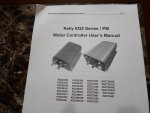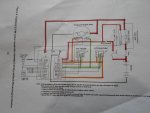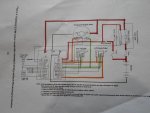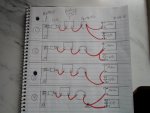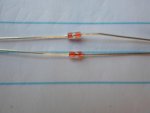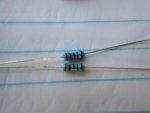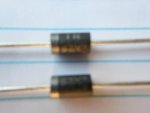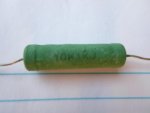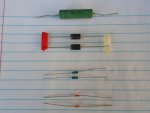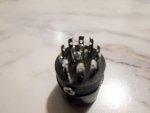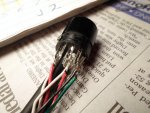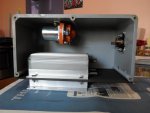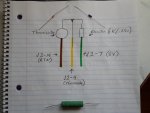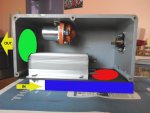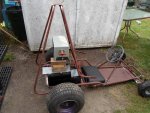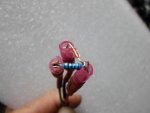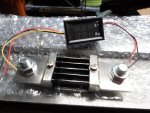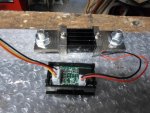Functional Artist
Well-known member
I have read the Kelly KDZ Series/PM Motor Controller User's Manual several times. (as you suggested) 
I even printed a copy so I could study the wiring diagram better & make notes.
I also made several copies of the wiring diagram, so I could use different color markers to high lite the different circuits to help simplify the wiring layout.
For this kart, I would like to stick with the 36 Volt set up.
Here is the components I have in mind:
1. Kelly KDZ72550 Controller.
2. I already have a "standard" 36V contactor but, would probably be better off going with a beefier one like a 36V/400A.
3. 500 Amp fuse - main power line
4. 30 Amp fuse - key switch
5. 3Amp/400V Coil Suppression Diode
6. 220 Ohm/10W Pre-Charge Resistor
7. PB-6 (pot box) (x 2) 1 for throttle & 1 for Brake
8. Thermisistor
Is the Thermisistor necessary or an added safety feature?
Can a thermosistor be hooked up on this motor (overheat sensor not functional on this model) or does the overheat sensor need to be functional first.
Is this what you had in mind for a control box?
http://www.alltraxinc.com/images/Heatsink_Assembly_400A.jpg
> Fuse Holder Main Battery (250 & 400amp)
> Logic Fuse holder for Key Switch & Controller Logic Power
> Main Solenoid (contactor) disconnect switch
> Bus bar connecting solenoid to fuse source
> Coil Suppression Diode (for solenoid coil)
> Pre-Charge resistor (Across main terminals)
> Auxiliary Relay for DC-DC Converters (KSI Controlled)
> Mounting surface for Alltrax 300amp, 400, 450, 500, 600,
and the venerable 650 amp controller
Material: Aluminum plate approx 3/8" thick (9.5mm)
Size: 10.5" x 10.5" (267mm x 267mm)
Part Number: Alltrax KIT-HEASTSINK-10x10
Not this specific one but, that concept, or an actual box?

I even printed a copy so I could study the wiring diagram better & make notes.
I also made several copies of the wiring diagram, so I could use different color markers to high lite the different circuits to help simplify the wiring layout.
For this kart, I would like to stick with the 36 Volt set up.
Here is the components I have in mind:
1. Kelly KDZ72550 Controller.
2. I already have a "standard" 36V contactor but, would probably be better off going with a beefier one like a 36V/400A.
3. 500 Amp fuse - main power line
4. 30 Amp fuse - key switch
5. 3Amp/400V Coil Suppression Diode
6. 220 Ohm/10W Pre-Charge Resistor
7. PB-6 (pot box) (x 2) 1 for throttle & 1 for Brake
8. Thermisistor
Is the Thermisistor necessary or an added safety feature?
Can a thermosistor be hooked up on this motor (overheat sensor not functional on this model) or does the overheat sensor need to be functional first.
Is this what you had in mind for a control box?
http://www.alltraxinc.com/images/Heatsink_Assembly_400A.jpg
> Fuse Holder Main Battery (250 & 400amp)
> Logic Fuse holder for Key Switch & Controller Logic Power
> Main Solenoid (contactor) disconnect switch
> Bus bar connecting solenoid to fuse source
> Coil Suppression Diode (for solenoid coil)
> Pre-Charge resistor (Across main terminals)
> Auxiliary Relay for DC-DC Converters (KSI Controlled)
> Mounting surface for Alltrax 300amp, 400, 450, 500, 600,
and the venerable 650 amp controller
Material: Aluminum plate approx 3/8" thick (9.5mm)
Size: 10.5" x 10.5" (267mm x 267mm)
Part Number: Alltrax KIT-HEASTSINK-10x10
Not this specific one but, that concept, or an actual box?

